Desperation and hope were felt side by side as Pakistan recently announced that it had kick-started construction on the Diamer Bhasha dam in the north-west of the country. Set to be built near the “killer” Himalayan peak Nanga Parbat and stand a staggering 272 metres high on the Indus river, the dam is billed by proponents as the “inevitable” solution to Pakistan’s water woes and ever-increasing hunger for energy.
Yet, even as government and military officials hail the USD 14 billion dam as a solution and job generator, environmentalists fear massive consequences and geologists say building such a mammoth structure in a seismically active zone is too risky.
Environmental concerns
The massive reservoir will not only divide communities on both sides of the river, it will displace 50,000 people, inundate 4,000-year-old relics and have a devastating impact on the climate in the region.
The environmental protection department has planned a study to assess and mitigate the challenges to the climate and wildlife, while archeological experts from Germany have identified 42,000 rocks that are to be moved before they sink underwater.
A team of experts will cut inscriptions from the bigger rocks, make replicas for those which cannot be cut and shift smaller rocks to a museum being set up in Chilas.
Furthermore, the dam will likely spur huge changes in weather patterns.
“Around 0.1 billion cubic metres of water will evaporate every year from the reservoir [if the dam is constructed]. This may change the climate and weather patterns in the region,” Shehzad Shigri, the director of Gilgit-Baltistan’s Environmental Protection Agency, told The Third Pole.
“Rising temperatures will accelerate the melting of Himalayan glaciers and a significant amount of water will be drained in the next three decades,” said Aisha Khan, the chief executive of the Civil Society Collation for Climate Change.
“Is it worth investing so much money [in the dam]?” Khan asked, adding that the solution to Pakistan’s water challenges lies not in new dams but in improved water management and cropping patterns.
See: Large dams don’t make economic sense, says study
“The time for building new dams is gone,” said Simi Kamal, chairperson of the Hisaar Foundation, which works on building consensus on water policy.
Kamal said Pakistan built big infrastructure like the rest of the world in the 1960s but it should now put effort, money and resources into maintaining those systems “since two-thirds of water is lost because of the leakages in the system”.
“We have to plug the leakages and learn to live with climate change,” Kamal said.
“I don’t think this is the right time to build a new dam and that too in a seismically active zone when Pakistan has no money,” she said.
Mustafa Gurgez, a geologist who specialises in hydrology, agreed. Gurgez, who is currently based in Amsterdam, said: “The construction of such a big dam in an active earthquake zone is a suicidal project.”
“There have been more than 900 tremors of 4-magnitude over the last 70 years in the region the dam is planned,” he said.
Loss of farmland
The very idea of this mega structure which will tame the mighty Indus has spread fear among communities, especially those in the Indus delta who have already suffered from loss of farmland due to consecutive dam building upstream. Tens of thousands have unwillingly agreed to witness their homes going underwater.
The Indus delta is reported to have shrunk by 92% over the past two centuries due to reduced river flows caused by dam construction and mismanagement of water.
“I will lose my agricultural land after the new dam is built,” Gulab Shah, a farmer from Thatta district in Sindh province, told The Third Pole.
The 50-year-old farmer, whose family has already lost over 600 acres of land to sea intrusion, is left with only 25 acres near Keti Bandar. He said he has sleepless nights as he fears for the future of his family.
“The sea has [already] intruded 3.5 million acres of agriculture land in Badin, Thatta and Sajwal districts and affected the lives of more than two million people,” said Muhammad Ali Shah, chairperson of Pakistan Fisherfolk Forum.
See: The Indus delta is being lost to the sea
“With the construction of the Bhasha dam, we fear losing the three districts altogether to the sea. But a lobby wants more dams to be built,” he added.
Land disputes and compensation
In Diamer, where construction workers have started to gather, a number of families are still awaiting compensation. At the same time, a small area where power stations will be installed, Gandlo Nala, is at the centre of a dispute between two tribes and two provinces.
See: Pakistan’s biggest dam stymied by land disputes
The Harban tribe of Kohistan and the Thor tribe of Diamer both claim the land and have the backing of their respective governments, but a solution to the issue is yet to be found.
At least 50,000 people from 31 villages in Diamer will be affected by the dam reservoir spanning over 100 km.
Shafiullah Danish, a 27-year-old resident of Thor village, and his family are among those who have not received compensation and are getting impatient.
“The indifferent attitude of the government will one day make us rebels. We are not allowed to even speak for our rights,” Danish said, referring to heavy security arrangements put in place at the dam site.
“We have given up everything for the sake of the dam, and yet we are being denied jobs and ownership of our land by the rival tribe,” he said.
‘The dam is vital’
The idea of the Diamer Bhasha dam was first floated in 2000. Successive governments — including a former top judge who planned to crowd-fund the 4,500 megawatt (MW) capacity structure — have tried to sway public opinion in favour of the dam.
While some say Pakistan will be hard-pressed to gather the funds for this multi-billion-dollar structure, its advocates stress the dam’s importance to Pakistan’s growing energy demand and water crisis.
In May, prime minister Imran Khan’s office issued a statement welcoming the groundbreaking at the dam site, and said the structure “will help meet energy requirements at affordable rates”.
The chairman of Pakistan’s Water and Power Development Authority (WAPDA), Lieutenant General (retired) Muzammil Hussain echoed the sentiment.
“Diamer Bhasha dam is vital for the survival and economic growth of the country,” he told The Third Pole, adding that the funds to build it would be generated by WAPDA.
Raising an aquifer is one of the alternatives to dams, he added, but the process requires at least 15 years, power and new infrastructure to extract the water. “We have to have more storage since we get water during three months in a year,” he said.
“We [Pakistan] store around over 13 million acre feet (MAF ) out of 145 MAF. At 10%, this is the worst in the world,” Hussain said.
The financial model for the project has four components under which the government will provide 20% financing and the rest will be managed through WAPDA’s equity and commercial financing, said Hussain. Turbines would be installed through supplier’s credit agreements, he added.
“The design and RCC structure of the dam can withstand [an earthquake] five times higher than the 2005 earthquake [7.5-magnitude],” he said.
Compensation for communities
On the issue of compensation for communities, the chairman said that while 85% of the 37,419 acres required for the dam has been acquired, he admitted that the resettlement plan of those affected was not well-thought-out.
Shehzad Shigri said authorities are trying to persuade defiant communities against relocating to higher grounds and pastures which could enhance conflict with wildlife and shrink their habitat.
“We will make sure the government fulfills all the commitments,” said Attaullah, the leader of the ‘affectees committee’ who may be displaced by the dam’s construction.
He added that the committee has asked the government to pay “annual water charges” instead of royalties and that the proposal is still under consideration along with other issues.
“There cannot be a compensation for the graves of our ancestors, our culture, tradition and history,” he said.
Provincial disputes
Though the mega project was approved by the Council of Common Interests (CCI) in 2010, nationalist parties, politicians from smaller provinces and those in the Indus delta have reservations. The issue has ignited fresh debate and upset political harmony.
“We being lower riparian residents of the delta have reservations about big dams since this technique is being decommissioned in the world,” said senator Sassui Palijo from Thatta district.
She stressed alternatives to dams to conserve and manage water, as she lamented that the water accord of 1991 – an inter-provincial water sharing agreement – was not being implemented in letter and spirit.
![<p>The Indus at the site of the proposed Diamer Basha dam [image by: Water and Power Development Authority, Pakistan]</p>](https://dialogue.earth/content/uploads/2020/07/Indus_Diamer_Basha_Dam_Site_Image_WAPDA.jpg)

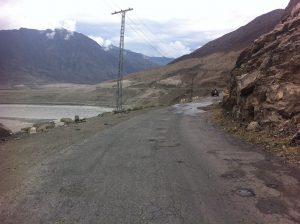

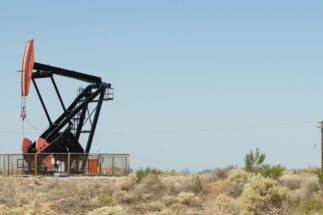
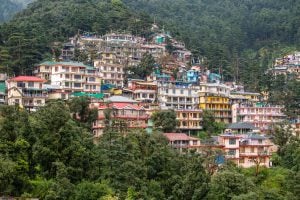
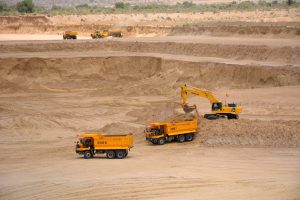
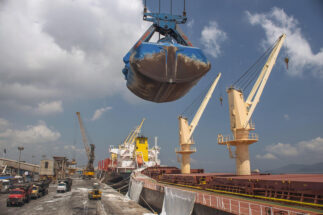
![Flooding along the Bagmati is an annual phenomenon in Bihar [image: Alamy]](https://dialogue.earth/content/uploads/2020/07/Floods-hit-Bihar-300x197.jpg)